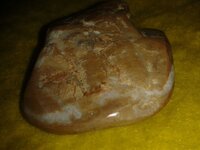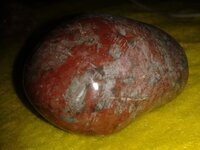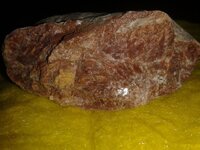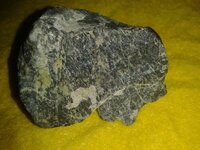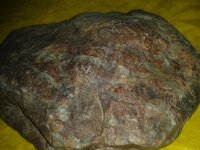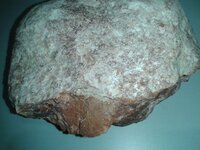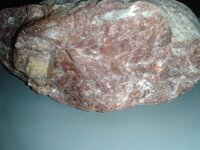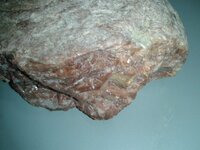You are using an out of date browser. It may not display this or other websites correctly.
You should upgrade or use an alternative browser.
You should upgrade or use an alternative browser.
id help
- Thread starter phantom35
- Start date
EricTheCat
Sr. Member
The first one looks like it might be chert or agate. Just a wild guess. Were the first two tumbled/polished?
If you can tell us where they were found (roughly) and the hardness of these it might help someone to be able to identify these. I am not that good at identification myself but someone else may be able to help with that information.
Good luck,
Eric
If you can tell us where they were found (roughly) and the hardness of these it might help someone to be able to identify these. I am not that good at identification myself but someone else may be able to help with that information.
Good luck,
Eric
Upvote
0
First and second are polished conglomerate and are a stretch to guess to what the parent rock is on such a small specimen. Third is chalcedony. Fourth is serpentinite. Fifth look's like hydrothermally altered rock close to no 3 and 4? Are you near some ophiolite?
Upvote
0
Eu_citzen
Gold Member
- Sep 19, 2006
- 6,484
- 2,111
- Detector(s) used
- White's V3, Minelab Explorer II & XP Deus.
- Primary Interest:
- Prospecting
Please, elaborate, Moesia.
#3 clearly has cleavage, as can be seen if you zoom in on the photo. It's reddish, which makes those two the most likely candidates.
#3 clearly has cleavage, as can be seen if you zoom in on the photo. It's reddish, which makes those two the most likely candidates.
Upvote
0
Apologies, i was in a hurry. It has no cleavage it is simply broken on a flat surface. As it has no conchoidal cleavage it is safe to assume it is chalcedony, opal would show conchoidal to uneven fracture. The rock is clearly silica rich, you can even make out a small quartz geoid in the bottom left corner of the picture.
Upvote
0
Eu_citzen
Gold Member
- Sep 19, 2006
- 6,484
- 2,111
- Detector(s) used
- White's V3, Minelab Explorer II & XP Deus.
- Primary Interest:
- Prospecting
Apologies, i was in a hurry. It has no cleavage it is simply broken on a flat surface. As it has no conchoidal cleavage it is safe to assume it is chalcedony, opal would show conchoidal to uneven fracture. The rock is clearly silica rich, you can even make out a small quartz geoid in the bottom left corner of the picture.
I assume we might be counting the numbers in a different order?
Middle row, to the left. It definitely has cleavage.
As a side note: Chalcedony does also show conchoidal fracture (not cleavage!).
Upvote
0
Brian T. Booth
Sr. Member
- Feb 28, 2013
- 299
- 103
- Detector(s) used
- Minelab: Eureka Gold
- Primary Interest:
- All Treasure Hunting
I assume we might be counting the numbers in a different order?
Middle row, to the left. It definitely has cleavage.
As a side note: Chalcedony does also show conchoidal fracture (not cleavage!).
#3 calcite. Agreed with EU
Upvote
0
Top Member Reactions
-
 2307
2307 -
 1113
1113 -
 1037
1037 -
 899
899 -
 838
838 -
 770
770 -
 754
754 -
 736
736 -
 606
606 -
 508
508 -
 490
490 -
 477
477 -
 447
447 -
 420
420 -
 400
400 -
 398
398 -
O
398
-
 394
394 -
 384
384 -
 376
376
Users who are viewing this thread
Total: 2 (members: 0, guests: 2)
